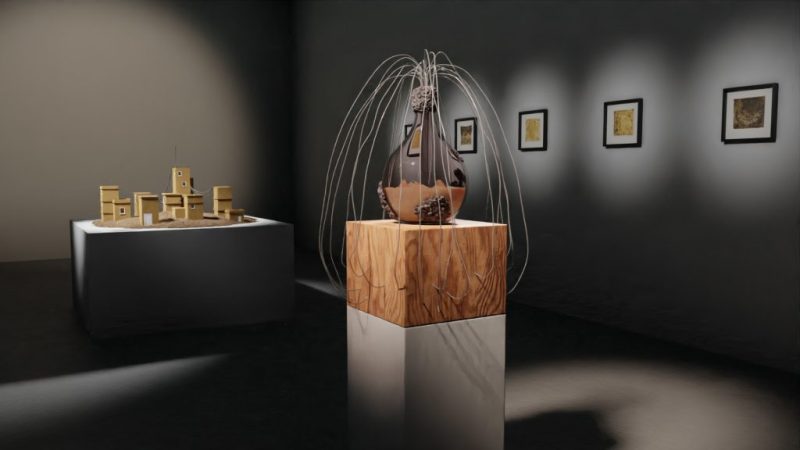Fermenting Futures was created in collaboration with acib GmbH and BOKU Vienna. In order to understand how the fermentation of yeast has evolved over millennia, the research group reconstructed different species of yeast and recreated the evolution of yeast in the laboratory. The goal is to make yeast fit for industrial applications. This project fits with the artists’ concept of not only telling the story of yeast from its beginnings to the present day from a cultural, aesthetic and historical perspective, but also highlighting its future potential – including the ability of a new biotech yeast to capture CO2 from the atmosphere to produce bioplastics.
The central artwork of Fermenting Futures was 3D-printed from this plastic filament produced from CO2. The artwork thus simultaneously captures carbon and produces plastic from it. At first glance, it solves one problem while creating another. This paradox can inspire reflection on global warming caused by too much CO2 in the atmosphere or large amounts of microplastics in the world’s oceans. Since the plastic produced is biodegradable, the process solves two problems at once.
The work, “The Bioarchaeology of Yeast,” examines the traces left by yeast on artifacts of human culture. As the habitat of extremophilic fungi, also known as black yeasts, they are not something to be removed, but objects of aesthetic appreciation in their own right. To depict this interaction, the artists allowed black yeast colonies to form complex morphological structures in the laboratory for months. From their image, they created three-dimensional sculptures on which organisms left their colorful traces.
A significant part of the exhibition explores the relationship between fermentation for the production of bread and beer and human settlement. In an artificially created city of metaphorical architecture, a series of architectural houses encrusted with breadcrumbs emerge, their rooms furnished and lit by tiny screens. The artists did not want to show an empty place, but to convey that the project is about living architecture that expanded over time from shacks to huge cities.
The project is intended to inspire a sense of awe and curiosity about yeast biotechnology, and to invite the public to interact with the works and reflect on our millennia-long, historical connection with yeast.

